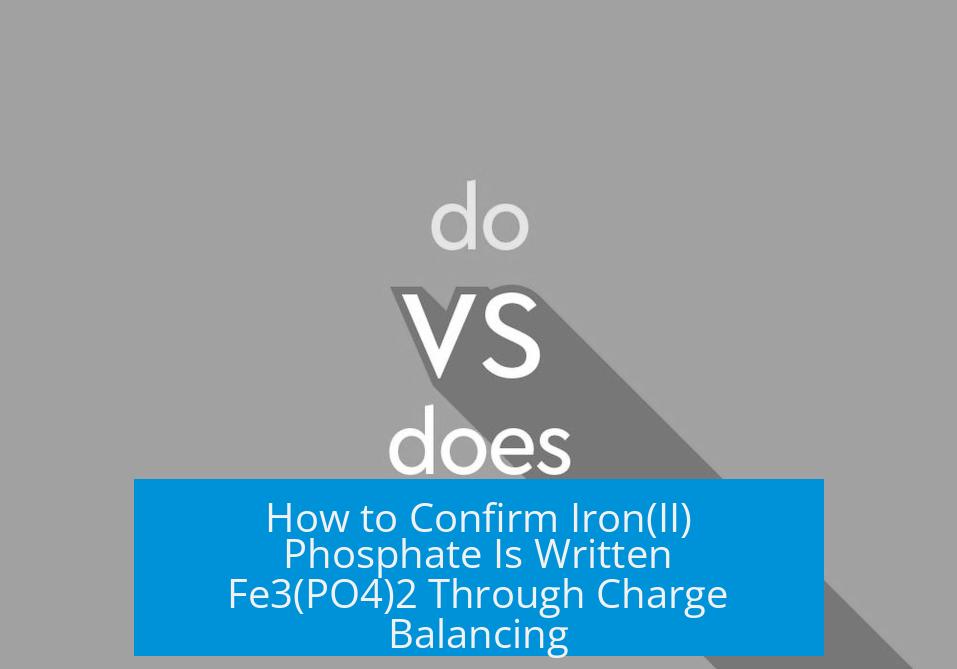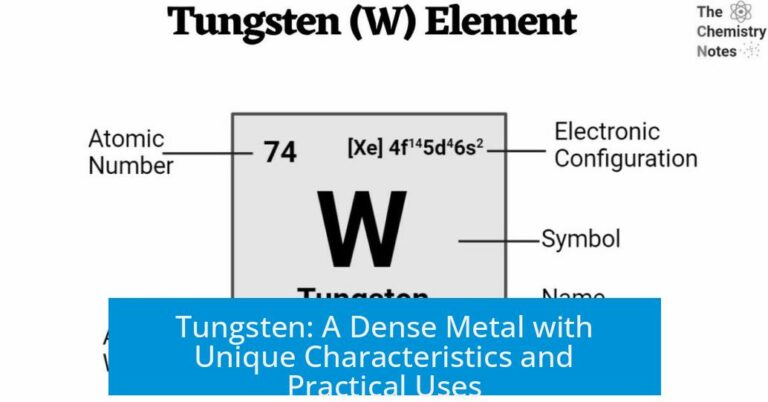How to Know Iron(II) Phosphate Is Written Fe3(PO4)2

Iron(II) phosphate has the chemical formula Fe3(PO4)2 because the charges of its ions balance to zero when combining three Fe2+ ions with two PO43- ions.
Understanding Ionic Charges
Iron(II) phosphate is an ionic compound. Ionic compounds form by the attraction between positively charged ions (cations) and negatively charged ions (anions). For the compound to be stable, its overall charge must be neutral.
Identifying Ion Charges
- Iron(II) ion, Fe2+, carries a +2 charge.
- Phosphate ion, PO43-, carries a -3 charge.
Balancing the Charges
To achieve electrical neutrality, the total positive charge must equal the total negative charge. Use the least common multiple (LCM) of the ion charges (2 and 3) to find a balance.
| Ion | Charge | Number of Ions Needed | Total Charge |
|---|---|---|---|
| Fe2+ | +2 | 3 | 3 × +2 = +6 |
| PO43- | -3 | 2 | 2 × -3 = -6 |
The positive and negative charges sum to zero (+6 + -6 = 0), confirming the formula Fe3(PO4)2.
Distinguishing from Iron(III) Phosphate
Iron can also exist as Fe3+ (Iron(III)). In that case, balancing Fe3+ with PO43- yields Fe2(PO4)3 because two Fe3+ ions (+6 total) balance three phosphate ions (-9 total), which requires more adjustments.
Summary of the Process
- Identify the ion charges: Fe2+ and PO43-.
- Find the LCM of 2 and 3, which is 6.
- Balance charges by using 3 iron(II) ions and 2 phosphate ions.
- Write the formula: Fe3(PO4)2.
Key Points
- Iron(II) ions have a +2 charge.
- Phosphate ions have a -3 charge.
- The formula must be electrically neutral.
- Use least common multiple to balance charges.
- Iron(II) phosphate is Fe3(PO4)2.
Why is the charge of Iron(II) considered +2 in Fe₃(PO₄)₂?
Iron(II) means iron is in the +2 oxidation state. This charge is written as Fe²⁺. It defines how many electrons the iron atom has lost, which is key to balancing the compound.
How do the charges of Fe²⁺ and PO₄³⁻ balance to form Fe₃(PO₄)₂?
Fe²⁺ has a +2 charge, PO₄³⁻ has a -3 charge. To balance, multiply Fe by 3 (+6 total) and PO₄ by 2 (-6 total). The positive and negative charges equal zero, making the compound neutral.
Why use the least common multiple (LCM) when writing Fe₃(PO₄)₂?
The LCM of 2 and 3 is 6. Using LCM helps find the smallest numbers of ions needed to balance charges. It ensures the total charge sums to zero in the formula.
Could Iron(III) phosphate have the same formula as Iron(II) phosphate?
No. Iron(III) has a +3 charge (Fe³⁺), so to balance phosphate (PO₄³⁻), the formula is Fe₂(PO₄)₃. For Iron(II), it’s Fe₃(PO₄)₂ because the charges differ.
How can you confirm the formula Fe₃(PO₄)₂ is correct for Iron(II) phosphate?
The charges from 3 iron ions (+6) and 2 phosphate ions (-6) cancel each other. This charge neutrality ensures Fe₃(PO₄)₂ is the correct formula for Iron(II) phosphate.





Leave a Comment